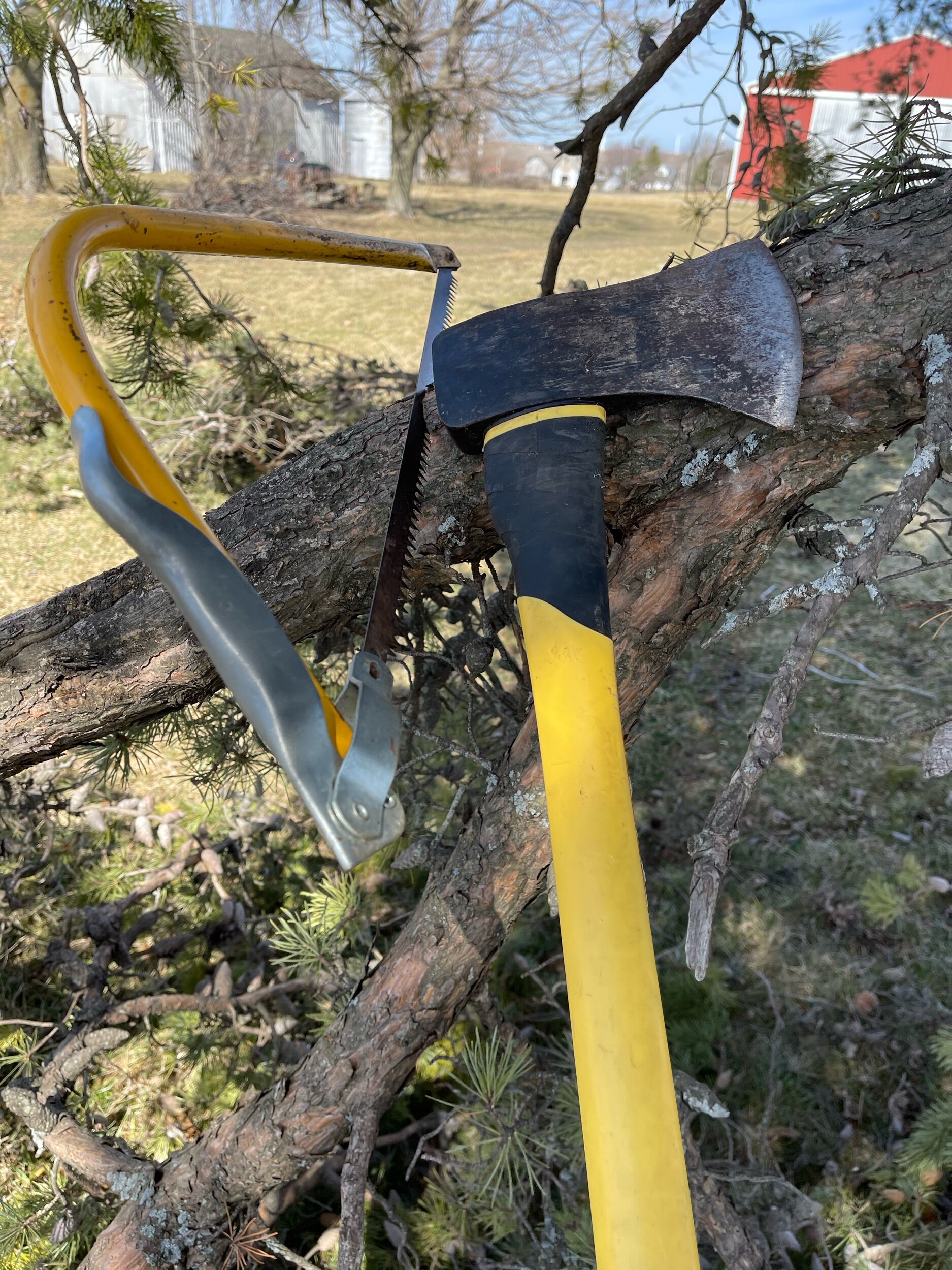Winter Aftermath
It is, of course, Spring - for nearly a month now, technically speaking. And with spring there is always yard cleanup. It’s an inevitable, unavoidable part of the season out here in our old house.
Yard cleanup is one of those tasks which never seems to be easier from year to year - I don’t ever gird myself for this activity, look around the yard and say: “hey, not so bad this year”.
But this spring is something... special.
Our past winter really offered some beautiful snowy vistas, with freezing rain followed by freezing frost coating trees earlier in the season, and then later alternated with wet, heavy snow just coating everything. It was truly impressive at times:
But while it’s truly a natural spectacle, it’s also naturally hard on the trees. I realized this a bit even at the time, as the old fir tree line remnant at the back of the property had some fallen limbs. It turned out, however, that they were simply the most outspoken members of our arboreal family. The others - especially the maples, stoic in their presentation - were apparently hiding their pain until they just couldn't any more. As late winter thawed into spring gusts, all of the broken material these stalwart soldiers were holding in was then released in a cathartic blast of broken branches, sticks, and twigs.
And so we have yard cleanup.
Not only is the volume of these prodigious, the number of very large branches on the ground is really quite astonishing. Enough so that I’ve actually separated out several of them as being big enough to cut up for firewood:
And the thing is, it isn’t all done - not just yet. The pictures here represent two separate weekends of activity that mostly removed and the things that were on the ground. But in some cases - for both the evergreen and deciduous trees - they aren’t ready to part with their damaged limbs.
In the case of the maples, branches break free and splinter off at the base, with portions of the limb remaining attached. You can see them hanging in the trees, just waiting for the wind to twist and turn them enough that they can finally break free. And for some of these I can reach them with my handsaw and a latter, or with my telescoping pruning doohickey:
Others are simply too high up for that, and will need to come down on their own.
For the most damaged trees in the old tree line there were two sizeable branches that were broken and twisted to the degree that the piny part of them were laying on the ground. But the soft, malleable nature of these trees is such that they were still attached - they had broken, and would soon completely die, but they didn’t know it (one could hear them saying softly “I’m not dead”, but they weren’t fooling anyone... or was that just the wind?).
For these, then, more substantial effort was required. And for the first, and smaller of the two, I initially started to work on it with my handsaw.
I did this for about three minutes of exhausting, largely vain effort before I remembered that I actually own an axe...
And that was definitely better. The first one separated with relatively minimal effort. The other one was broken higher up into the tree, and I ended up needing to cut it up in sections to get it down into workable pieces.
I always find working with the axe very satisfying - it’s a real workout, it lets out all of the frustrations of the week, and makes one feel, well, rather manly. However, by the end of working on the second branch I’d be lying if I didn’t at least idly wonder why I don’t own a chainsaw...
My two separate weekends of this were nearly a month apart - one in mid-March, and then this weekend. Finishing it up became a thing, tho, because the grass has begun to grow again, and it’s really hard to mow over fallen branches. This put some urgency into the idea of moving forward, and so I and my yard crew had to get to it.
They are good company, if not really good help. And no so great at posing for pictures...








































